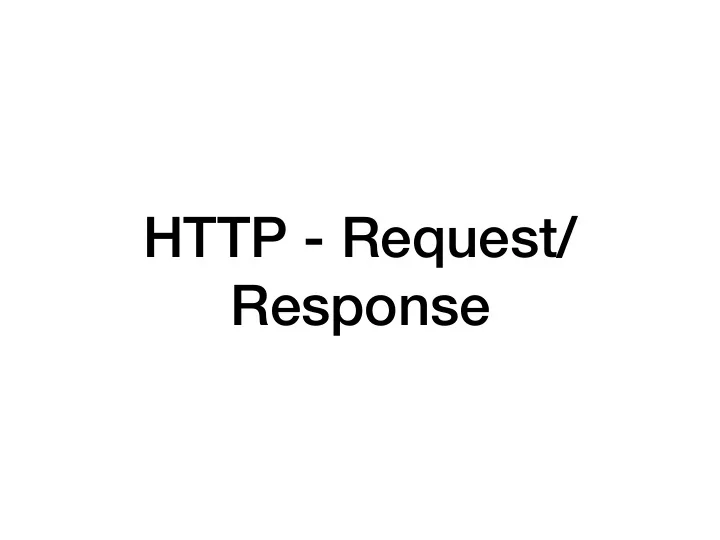

HTTP - Request/ Response
HTTP - Documentation • HTTP/1.1 is defined by RFC2616 of the IETF • https://tools.ietf.org/html/rfc2616 • This is THE document for all your questions about HTTP • Today we'll discus topics in sections 4, 5, and 6 • RFC • Request For Comments • Submit an RFC for public discussion or to publish information • IETF • Internet Engineering Task Force • Adopts some RFC's as Internet standards
New Lines • A new line character in an HTTP request must be: • "\r\n" • Carriage return (From the days of typewriters) • New line • In the documentation this is referred to as a CRLF • CRLF == Carriage Return Line Feed • Also from the documentation The line terminator for message-header fields is the sequence CRLF. However, we recommend that applications, when parsing such headers, recognize a single LF as a line terminator and ignore the leading CR.
Request • We'll use this simple request as an example • What specific resource is being requested? GET / HTTP/1.1 Host: cse312.com
The Request Line • The first line of the request is always the request line • The request line has 3 values separated by spaces • The request type (ex. GET/POST) • The path of the request (ex. "/") • The HTTP Version • We'll always use HTTP/1.1 in this course • You can assume the request uses HTTP/1.1 in your assignments without checking this string GET / HTTP/1.1 Host: cse312.com
The Request Line • Parse the request line by looking for the 2 space characters • Separate the values and check the strings • Typically: When the root path "/" is requested, serve your home page • By convention, web servers look for index.html to server • If the url contained a di ff erent path, it will appear in the request line GET / HTTP/1.1 GET /lecture HTTP/1.1 Host: cse312.com Host: cse312.com
Headers • Following the request line are any number of headers • HTTP Headers • Key-Value pairs • Key and value separated by a colon ":" • Each header will be a new line • To parse, look for the colon ":" and read the key and value GET / HTTP/1.1 Host: cse312.com
Response • Your web server will listen for requests over the TCP sockets and respond with HTTP responses • Send this response back to the client to serve them the requested content HTTP/1.1 200 OK Content-Type: text/plain Content-Length: 5 hello
Status Line • The first line of the response must be the status line • Status line contains 3 values separated by spaces • The HTTP version • The status code • The status message (Reason phrase in docs) HTTP/1.1 200 OK Content-Type: text/plain Content-Length: 5 hello
Response Headers • The headers in the response follow the same format as request headers • Should have at least two headers • Content-Type - Tells the browser how to parse this content • Content-Length - How much information should be read from the body HTTP/1.1 200 OK Content-Type: text/plain Content-Length: 5 hello
Body • The headers are followed by 2 new lines to indicate the beginning of the body • The body contains the content that is being served • The body ends with 2 new line characters • [Requests can have bodies too] HTTP/1.1 200 OK Content-Type: text/plain Content-Length: 5 hello
Response Codes • Tells the browser the nature of the response • 200 means everything went well • 404 means the content was not found • Include a human readable message • OK • Each code has a standard message, but di ff erent messages are accepted HTTP/1.1 200 OK Content-Type: text/plain Content-Length: 5 hello
Response Codes • Some responses don't include a body • To redirect to another page use 301 with no body • Must contain a Location header for the location of the redirect • Location can be a relative path (Same server) or an absolute path HTTP/1.1 301 Moved Permanently Location: /
Recommend
More recommend